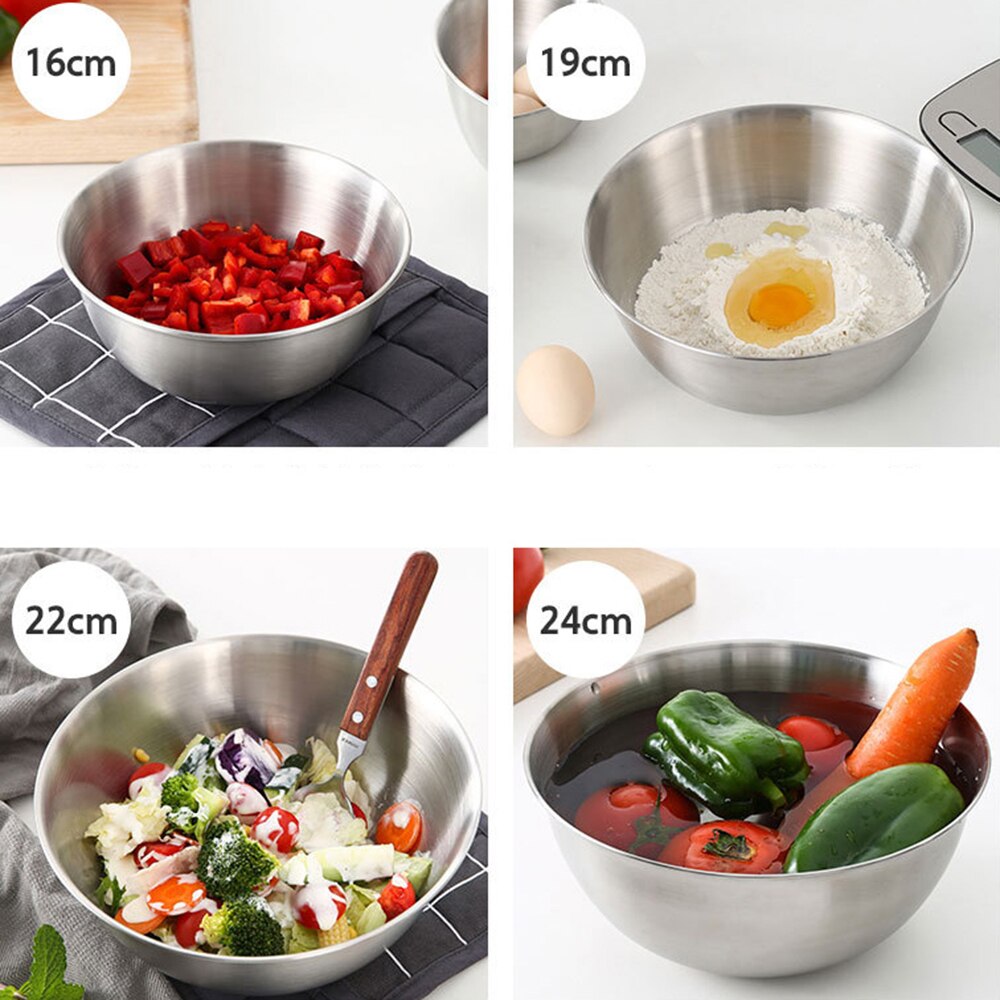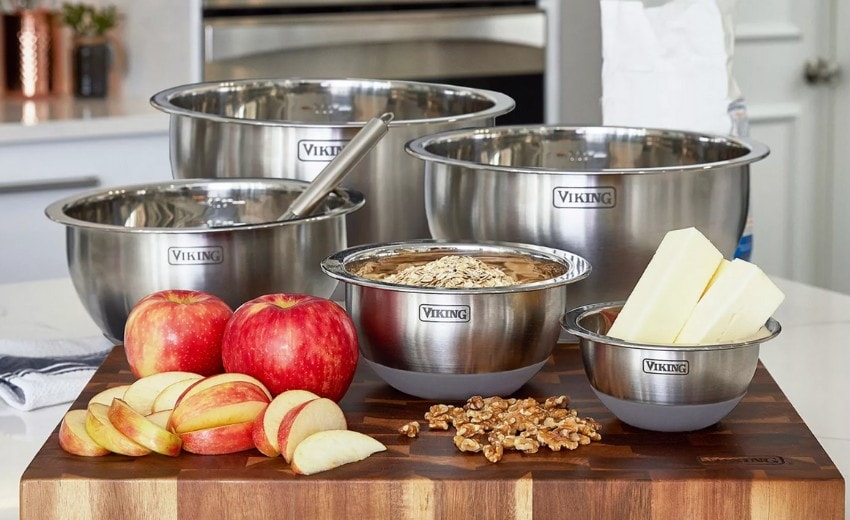Let’s face it: a good mixing bowl is more than just a pretty face in your kitchen. It’s a workhorse, a culinary companion that endures countless whisks, folds, and enthusiastic stirs. And while ceramic and plastic bowls have their place, nothing quite beats the versatility and durability of a stainless steel mixing bowl. This ultimate guide will explore everything you need to know about choosing the perfect stainless steel mixing bowls for your kitchen, transforming your baking and cooking experience.
Why Stainless Steel Reigns Supreme
Stainless steel mixing bowls offer a winning combination of features that make them superior choices for serious home cooks and bakers. Their strength and resistance to chipping and cracking far surpasses ceramic and glass counterparts. They are non-reactive, meaning they won’t affect the flavor or color of your ingredients, unlike some reactive metals. Cleaning is a breeze— simply pop them in the dishwasher (though handwashing is always gentler) and they’ll emerge sparkling. Plus, their sleek, modern look elevates any kitchen aesthetic.
Understanding the “Torque” of Mixing: Bowl Design Matters

Now, “torque” isn’t a spec you’ll find on the box of mixing bowls. However, the concept of torque—the rotational force—is relevant to how effectively you can mix ingredients. A well-designed stainless steel bowl contributes to efficient mixing in several ways:
- Shape and Weight: A heavier, wider bowl provides greater stability, preventing tipping and spills during vigorous mixing. The shape, particularly a slightly rounded bottom, facilitates the incorporation of ingredients.
- Material Thickness: Thicker stainless steel means less flexing and vibration during mixing, allowing for more control and precision.
- Lip Design: A well-designed lip allows for easy pouring and scooping without dripping.
- Non-slip Base: Some bowls feature a non-slip base or silicone feet, which prevents sliding during intense mixing actions.
Choosing the Right Size and Set: Capacity Considerations

The ideal size of your stainless steel mixing bowls depends entirely on your cooking and baking habits. Many sets offer a nested configuration, saving valuable cabinet space. A good set typically includes bowls of varying sizes, such as:
- Small (1-2 quart): Ideal for whisking eggs, preparing sauces, or mixing small batches.
- Medium (3-5 quart): Perfect for mixing cake batter, cookie dough, or larger batches of salad dressing.
- Large (6-8 quart): Suitable for large batches of dough, preparing large quantities of food, or chilling large amounts of ingredients.
Material Matters: Gauging Stainless Steel Quality

Not all stainless steel is created equal. Look for bowls made from high-quality, food-grade 18/8 or 18/10 stainless steel. These grades offer excellent durability, resistance to corrosion, and won’t react with your food. Avoid bowls made from thinner, lower-grade steel, which might dent or warp easily.
Beyond the Basics: Features to Consider
While a simple stainless steel bowl gets the job done, some added features can significantly improve the mixing experience:
- Pour Spouts: Integrated pour spouts prevent spills and make transferring mixtures easier.
- Handles: Handles offer a secure grip, especially when dealing with heavier mixtures.
- Measuring Marks: Marked gradations on the side of the bowl are useful for measuring ingredients directly.
- Flat Bottoms: While some prefer the rounded bottoms for incorporating ingredients, a flat bottom offers better stability for certain tasks.
Top Stainless Steel Mixing Bowl Brands and Comparisons
Several brands consistently produce high-quality stainless steel mixing bowls. While specific model comparisons require a separate, in-depth review, here are some well-regarded brands known for their durability and performance:
- [Brand A]: Known for [specific feature, e.g., heavy-gauge stainless steel, ergonomic handles].
- [Brand B]: Often praised for [specific feature, e.g., stylish design, nested design for space saving].
- [Brand C]: Features [specific feature, e.g., lifetime warranty, wide range of sizes].
(Note: Replace “[Brand A]”, “[Brand B]”, “[Brand C]” and bracketed descriptions with actual brand names and their prominent features. This section can be expanded with detailed comparison tables if needed.)
Care and Maintenance: Keeping Your Bowls Sparkling

Proper care ensures the longevity of your stainless steel mixing bowls. While most are dishwasher safe, hand-washing is often preferred to prevent scratches and maintain the shine. For stubborn stains, a paste of baking soda and water can work wonders. Avoid abrasive cleaners that can scratch the surface.
Conclusion: The Perfect Mixing Bowl Awaits
Investing in a high-quality set of stainless steel mixing bowls is an investment in your culinary journey. By understanding the factors discussed above—from the “torque” of efficient mixing design to the material quality and practical features—you can choose the perfect bowls to elevate your cooking and baking experience for years to come. Happy mixing!


